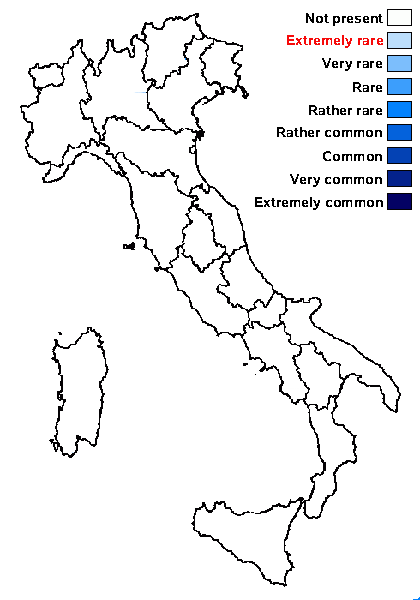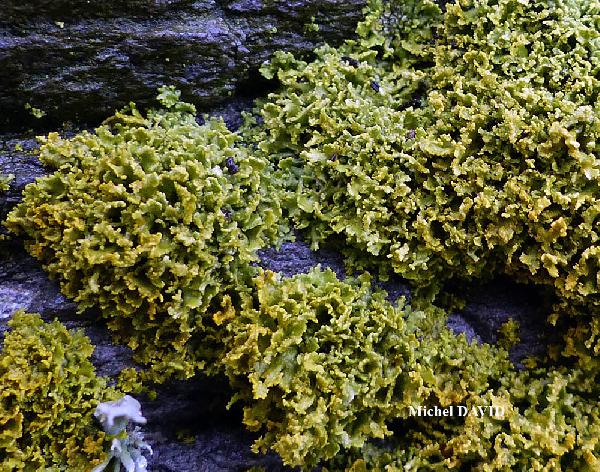Polycauliona ucrainica (S.Y. Kondr.) Frödén, Arup & Søchting
in Arup & al., Nordic J. Bot., 31, 1: 53, 2013. Basionym: Xanthoria ucrainica S.Y. Kondr. - Lichenologist, 29, 5: 435, 1997
Synonyms:
Distribution:
Description: Thallus foliose, greenish yellow to lemon-yellow, sometimes grey in older parts, consisting of small 0.7-1.2(-1.7) mm long and 0.7-1.2 mm wide, basally constricted (0.2-0.3 mm wide), dorsiventral, ascending, subsquamulose, often subumbilicate lobes forming up to 0.35 mm wide, often confluent patches. Margins of lobes undulate, with abundant, (35-)40-60(-65) µm wide, brownish orange blastidia which also occur on the erhizinate lower surface; conblastidia absent. Apothecia unknown. Pycnidia frequent, immersed in orange-red warts. Conidia broadly ellipsoid, (1.9-)2.2-2.5(-3.1) x 1.2-1.5(-1.8) µm. Photobiont chlorococcoid. Photobiont chlorococcoid. Spot tests: thallus, apothecia and blastidia K+ dark red, C-, KC-, P-. Chemistry: parietin (major), fallacinal, emodin, teloschistin and parietinic acid, corresponding chemosyndrome A of Søchting (1997).Note: a species described from the Ukraine, very similar to and difficult to distinguish from P. candelaria, known from several European countries. To be looked for in Italy.
Growth form: Foliose
Substrata: bark
Photobiont: green algae other than Trentepohlia
Reproductive strategy: mainly asexual, by soredia, or soredia-like structures (e.g. blastidia)

Predictive model
Growth form: Foliose
Substrata: bark
Photobiont: green algae other than Trentepohlia
Reproductive strategy: mainly asexual, by soredia, or soredia-like structures (e.g. blastidia)

Predictive model
 Index Fungorum
Index Fungorum
 GBIF
GBIF


